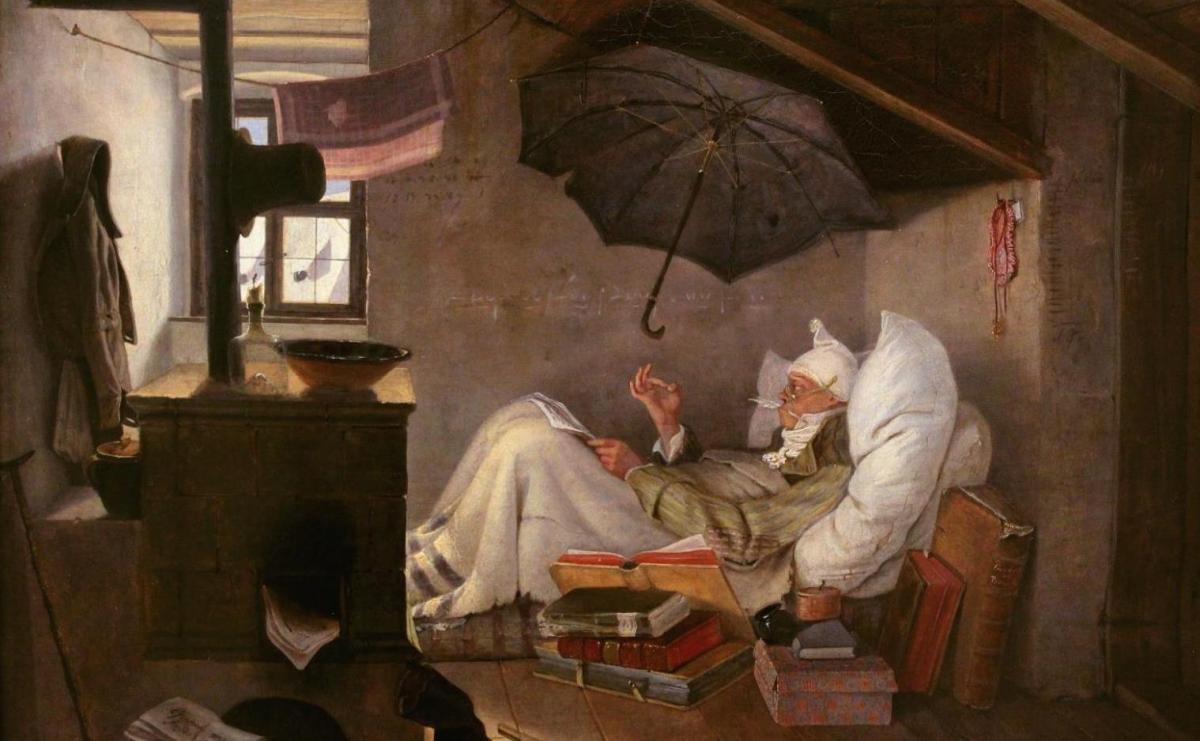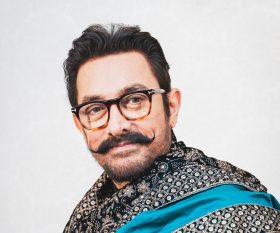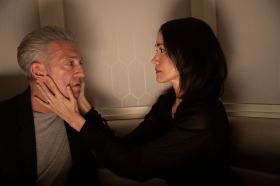The idea of the director as artist is a bit on the nose in the Australian industry. Most successful directors tend to develop their distinctive approach and skills early on, and then mature into making major Hollywood genre films, television series and blockbusters.
Determined auteurs know they have a tough path ahead of them, as they struggle against the idea that a) the pictures had better be cheap, b) art is now disposable, and c) the arthouse audience is too small to service.
What about the ambitions of students? How do they see their futures? For a general perspective we asked Andrew O’Keefe, the acting head of the Film and Television School at the Victorian College of the Arts, and Herman van Eyken, who runs the Griffith Film School, to discuss the trajectories of their students.
Andrew O’Keefe
The VCA is a historical legend, bought from the Swinburne Film School around 1992. Swinny trained a generation of directors to think of themselves as artists, auteurs in the grand French manner.
According to O’Keefe, traces of that vision still remain, but the school is now much more pragmatic. VCA is seen as the first step towards Hollywood, via film festivals and Screen Australia support. It has created a formal mentorship and facilities partnership with Australians in Film, which supports Australian practitioners in the US.
‘Sandra Scibberas [the permanent head of school] is behind that one because she is a very Hollywood-centred thinker. So I guess she is a proponent of the industrial model,’ he said.
‘We certainly have ambition from a good number of students to get to Hollywood – more so in our Master’s programs. The screenwriters probably do have a more defined career path, which is mostly an industrial approach.’
Students see themselves working on high budget projects, they sense the ferment of Hollywood, and they trace the opportunities from crewing here on overseas productions back to their creative roots. At the same time, he argues, Hollywood itself is changing.
‘I think the importance of Hollywood is becoming less. Or is expanding out to the rest of the world. Rather than a geographic location, it is becoming a concept.’
He was very clear that the school still supports the idea of the director as a central creative artist, though it now teaches a much broader range of crafts. It finally has a Masters in producing, for instance, and teaches students who are exploring those skills in the service of auteur filmmaking, of genuine art.
Auteurism is still alive and well in the VCA method. ’That’s the way we like to educate filmmakers. As a director you should come up with the story, you should write that story, you should direct that story and where possible you should edit that story as a learning experience, because that gets you across every discipline that a director needs to be across, and then you can specialise once you leave the school.’
That is a familiar philosophy in screen training, but it probably comes with a sense of tradition at the VCA, supported by its role as just one art form in a larger school.
‘Some students have things to say about the world and filmmaking is the natural way for them to say it. It is not tied to getting rich, it’s really about the vision of contributing to a society. We have students who only want to make films to make the world a better place. They will do it outside the system, because the system costs money.’
Herman van Eyken
Queensland’s Griffith Film School is the now the biggest In Australia, with at least a thousand students at any one time. That is a lot. Most of them find work, in a system which van Eyken claims continues across the generations.
‘You would probably try to find compelling and interesting ways to prove your skills as a freelancer. And you would probably be not that picky in your early years, and try to make sure that you can actually survive, and kind of grow into your craft, while at the same time you would still try to develop your own new projects, which would still be short films.. And they are definitely not with the scope to break the bank.’
However, he argues, the short film festival route is pretty brutal because it is good at filtering out the best, so the others just disappear. Most people eventually sink into their craft, and make a living as screen creators in a busy, multivalent industry. Some of them reveal exceptional skills through junior positions or attachments and are supported by companies like Ludo, which makes Bluey.
Picking the artist in the room
Herman van Eyken acknowledges that the school can pick students who are authentic to a genuine artistic vision. ‘It is definitely the ones that are very analytical about their work,’ he said, ‘and they understand where this next project fits because it will lead them to the next one and the next one. And they take the time to develop these, but they also take the time to self evaluate very strongly.’
‘They are very hardworking, and very humble in their attitude. They are what I call the continuous learners. Some students are very fast learners and high performing, but in my experience a fast learner also stops learning. And then it’s nearly catastrophic. The real guy who is humble is very critical, is never sure, doesn’t necessarily wants your approval but certainly wants to see what you can criticise and learn from it.
‘I think it’s relatively easy to teach your students skill sets. It’s not so easy to make critical thinkers. People with a thorough understanding of the ethical dimension of their work, because they are communicators, they are mass communicators in some sense – their work will travel anywhere in the world.’
According to Andrew O’Keefe, ‘They’re the ones with a stubbornness about what they’re trying to say, rather than a foolishness. They will listen and they will take on advice when it doesn’t change the overall trajectory of their vision, they are clever enough to recognize a smarter way to go about something, and that there is no one way to have their vision.
‘And there’s also the very simple thing. They can answer the question about the theme of the story. They will fumble in the middle, have one version this week and change it next week but the overall theme will be the same. The other students can’t answer that question which means they have a plot but not the soul of a plot.
‘And the ones who have the vision and have that theme and are willing to compromise, will make the film happen in the right way and in a safe way, and ego wasn’t part of it.’
In the end
The VCA encourages students to start companies or at least score an ABN number so they can get bits of work here and there from clips to corporates, campaigning videos and education programs. Indeed, there is an enormous and growing sector of videographers and digital creators who never work in the mainstream, but develop solid careers.
The visionaries evolve beyond that space. Around Griffith, careers take off once students form teams and small tribes that can work together on larger projects. Inspiration and leadership eventually comes through.
In a way both these journeys seem to lead to a form of patronage as trusted people with solid reputations open the door to the people they spot with real talent.
According to Andrew O’Keefe, the development of low cost technology and software is tremendously valuable. Herman van Eyken sees the tension between ever-increasing opportunities and intensifying competition. Either way, the future for students involves complex and unexpected compromises and the gap between art and entertainment is an illusion. Who would have thought that a director like Cate Shortland, with such a singular artistic vision, would be entrusted with a film from the belly of the Marvel beast, Black Widow? Wisdom takes surprising forms.
Lore (2012) from Piffl Medien Kino-Bar, directed by Cate Shortland. Below, Black Widow (2021), also directed by Cate Shortland.





